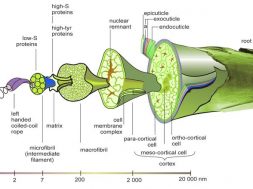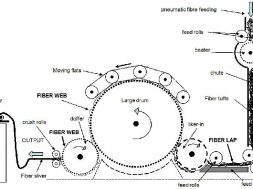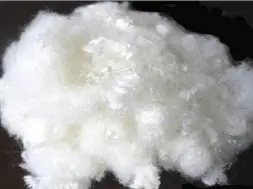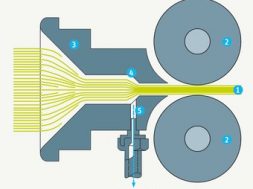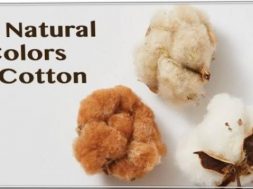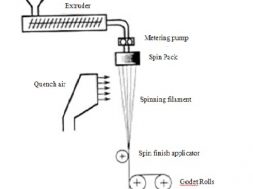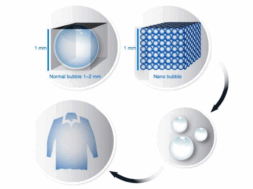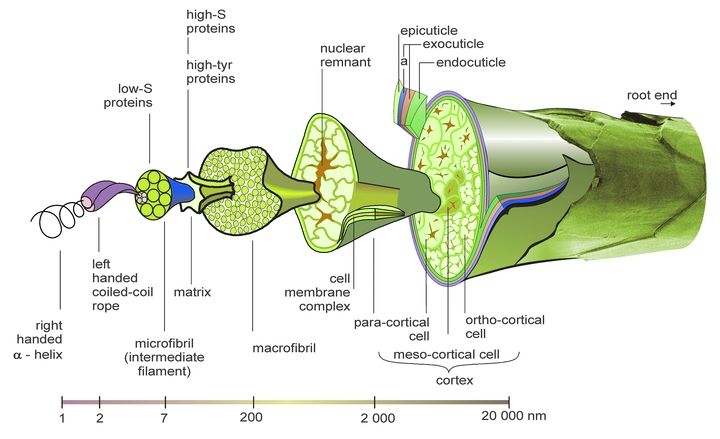
Wool Fibre Morphology | Part 03
Part 01: Wool Fibre | Wool Fibre Identification | Uses & Application of Wool fibre
Part 02: Wool Fibre | Manufacturing Process of Wool Fibre
Part 04: Physical & Chemical Properties of Wool Fibre
Wool Fibre Morphology | The Macro Structure of Wool
Wool Fibre Morphology
The wool fibre is crimped, fine to thick, regular fiber. As the diameter of the wool fibre increases the crimp per unit length decreases.
Length of the fibre ranges from 5cm for the finest 35cm for the coarsest wools
Diameter for finer 14µm, coarse 45µm.
Length width ratio ranges from 2500:1 for the fine and shorter, 7500:1 for coarse and longer
Colour vary from Off-white to light cream.
Crimp for fine wool 10 crimp/cm and coarse wool 4 crimp/cm
Micro Structure of Wool Fibre
The wool fibre is made of protein molecules. Keratin proteins are actually crystalline copolymers like nylon, where the repeating units are amino acids. They also crosslink through disulphide bonds present in the cysteine amino acid. Through X-Ray diffraction, it has found that wool has two structures. One is alpha-keratin and second is beta-keratin (Morton and Hearle, 1986)
The micro structure of wool fibre consists of three main components, the cuticle, cortex and medulla.
Figure: Exploded view of structural units of wool fibre
1) Cuticle: The cuticle is the layer of overlapping epithelial cell’s surrounding the wool fibre. There are three cuticles.
- Epi Cuticle: The epicuticle is the outermost layer covers of the wool fibre.
- Exo Cuticle: The overlapping epithelial cell forms the exocuticle.
- Endocuticle: The endocuticle is the intermediate connecting layer bonding the epithelial cell of the cortex of wool fibre.
2) Cortex: The cortex – the internal cells-make up 90% of the fibre. There are two main types of cortical cells i.e. ortho-cortical and para-cortical. Each has a different chemical composition. In finer fibres, these two types of cells from in two distinct halves. The cells expand differently when the absorb moisture, making the fibre bend-this creates the crimp in wool. In coarser fibres, the para-cortical and ortho-chemical cells from more randomly so there’s less crimp. Fibre crimp makes wool fell springy and provides insulation by trapping air.
3) Cortical cell: The cortical cells are surrounded and held together by a cell membrane complex, acting similarly to mortar holding bricks together in a wall. The cell membrane complex contains proteins and waxy lipids and runs through the whole fibre and allows easy uptake of dye molecules. The molecules in this region have fairly weak intermolecular bonds, which can break down when exposed to continued abrasion and strong chemicals.
4) Macro-fibril: Inside the cortical cells, there are long filaments called macro-fibrils. These are made up bundles of even finer filaments called microfibrils, which are surrounded by a matrix region.
5) Matrix: The matrix consists of high sulphur proteins. This makes wool absorbent because sulphur atoms attract water molecules. Wool can absorb up to 30% of its weight in water and can also absorb and retain large amount dye. This region is also responsible for wool’s fire-resistance and anti-static properties.
6) Micro-fibril: Within the matrix area, there are embedded smaller units called micro-fibrils. The micro-fibrils in the matrix are rather like the steel rods embedded in reinforced concrete to give strength and flexibility. The micro-fibrils contain pairs of twisted molecular chains.
Part 01: Wool Fibre | Wool Fibre Identification | Uses & Application of Wool fibre
Part 02: Wool Fibre | Manufacturing Process of Wool Fibre
Part 04: Physical & Chemical Properties of Wool Fibre
(3647)
